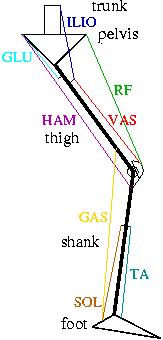 |
|
||||||||||||||||||||||||||||||||||
|
|||||||||||||||||||||||||||||||||||
Project Description
The use of models of the musculoskeletal system as a tool to support the development of lower limb assistive devices is becoming an established approach. Although some models developed provide a good insight in many aspects of the design of lower limb assistive devices like prosthesis, they present important limitations. Specially the metabolic energy expended during the gait, which is an important criteria to evaluate the performance of, for example, lower limb prosthesis, must be better accounted for. A better estimation of the variations in the metabolic cost and in the kinematics of the body during the mechanically disturbed gait depends on the proper modeling of the human musculoskeletal system. Recent research in the field of human musculoskeletal modeling achieved good results, but at the expense of a high degree of complexity and computational effort. These drawbacks make the use of musculoskeletal modeling to design lower limb assistive devices challenging. On the one hand, the models should be complex enough to predict variations in the metabolic cost and kinematics of the gait satisfactorily. On the other hand, the development of efficient strategies and the use of simplified models are required in order to keep the problem computationally tractable and ensure the straightforwardness of the analysis. In this context, the aim of this project is to develop straightforward approaches to model and analyze mechanically disturbed gaits using musculoskeletal models that can be used in the future to design lower limb prosthetic devices. The project focused up to date on the following three topics:
Contact |
| Last modified
2.9.2014 ( |
